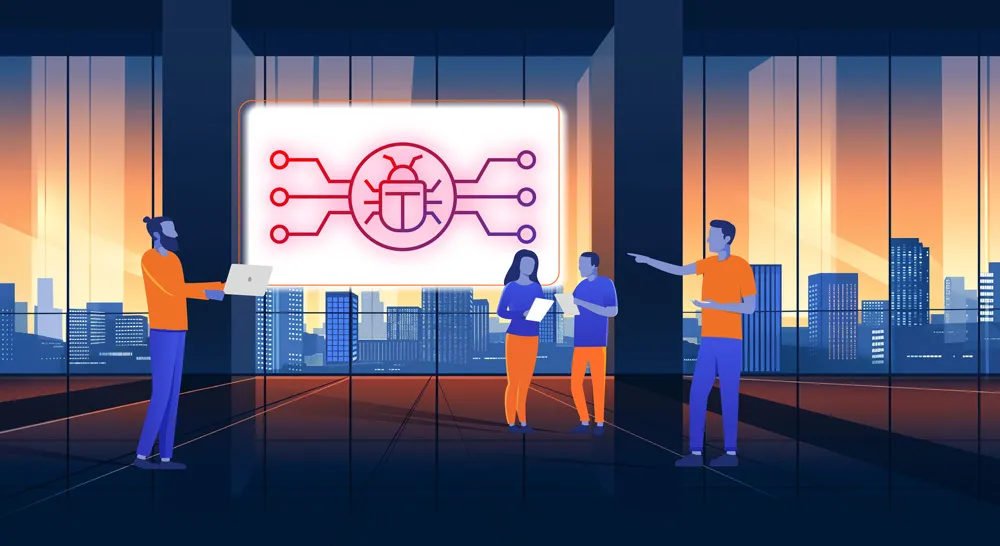
Effective asset management is no longer optional, it is essential for improving security, ensuring business continuity, reducing operational risk, and strengthening incident response readiness.
In today’s complex business environment, organizations rely on a growing array of technology assets. From cloud platforms and mobile devices to operational systems, intellectual property, and critical business data, every asset holds value, and every asset introduces potential risk.
Yet many companies still lack full visibility into their environments. This gap leads to security vulnerabilities, operational inefficiencies, regulatory challenges, and increased exposure to cyber threats.
An effective Asset Management Program is not simply an IT task. It is a business imperative that directly supports resilience, operational excellence, and long-term growth.
Defining Asset Management
An asset management program provides a structured approach to identifying, classifying, tracking, and managing digital and physical assets throughout their lifecycle.
Asset management empowers business leaders with critical insights, enabling organizations to understand what they own, where vulnerabilities exist, how resources are utilized, and how quickly they can respond when challenges arise.
Asset management supports smarter business decisions, stronger cybersecurity defenses, faster incident response, and regulatory compliance.
What Types of Assets Should Be Documented
A comprehensive asset management program should include:
Hardware: Servers, workstations, laptops, mobile devices, networking equipment, Internet of Things devices, and industrial control systems
Software: Licensed applications, open-source tools, SaaS platforms, and internally developed software
Cloud Services and Infrastructure: Cloud storage, computing instances, containers, virtual machines, and third-party services
Data Assets: Intellectual property, client data, personal information, confidential business information, and operational databases
Operational Assets: Security tools, backup systems, authentication services, and business-critical applications
External Assets: Vendor-managed systems, partner integrations, and supply chain technologies
Every asset, whether owned internally, leased, or operated through a third-party provider, should be cataloged and evaluated based on its criticality and exposure.
Who Should Own and Manage Assets
Clear ownership and accountability are fundamental to an effective asset management program.
Business Unit Leaders should own assets that are critical to business operations, including client-facing applications and proprietary tools
IT Departments should manage infrastructure assets such as hardware, networks, and software platforms
Security Teams should oversee cybersecurity-related assets and ensure that protections are aligned with organizational policies
Data Governance Teams should manage data classification and retention across the organization
Executive Leadership should sponsor the asset management program and hold stakeholders accountable for asset accuracy and lifecycle management
Assigning asset ownership ensures that accountability is distributed appropriately across the organization, driving better maintenance, security, and operational alignment.
Why Asset Management Programs Matter for Companies
Complete Visibility and Control
Without a current, accurate view of your organization’s assets, managing security risks and operational challenges becomes guesswork. Asset management provides leadership with clear, actionable intelligence about the infrastructure and technologies that power the business.
Stronger Cybersecurity Defenses
Untracked assets are easy targets for cyber attackers. Devices running outdated software, unauthorized cloud services, and forgotten legacy systems create unnecessary vulnerabilities. A robust asset management program ensures that security measures protect the entire enterprise, not just the visible parts.
Faster and More Effective Incident Response
When a security incident occurs, time is critical. Asset management gives incident response teams immediate access to essential information, including what systems are impacted, what data they contain, and how they are interconnected, enabling faster containment, recovery, and communication with stakeholders.
Better Operational Planning and Cost Optimization
Asset management improves resource planning and budget forecasting. It enables organizations to identify underutilized technologies, plan for asset upgrades or decommissioning, and ensure that investments in technology align with business goals.
Support for Strategic Initiatives and Growth
Expanding into new markets, adopting new technologies, or completing mergers and acquisitions requires a deep understanding of the organization’s assets. Asset management provides the visibility needed to support transformation initiatives with confidence.
Core Components of a Mature Asset Management Program
A successful asset management program is built on more than inventory lists. It requires an ongoing, integrated approach that includes:
Continuous asset discovery using automated tools to detect and catalog assets
Asset classification and prioritization to ensure that critical systems and sensitive data receive appropriate protection
Ownership and accountability assigned to responsible business or technical leaders
Lifecycle management from procurement through secure decommissioning
Integration with cybersecurity, IT, and risk management programs
Real-time updates and monitoring to maintain an accurate, dynamic understanding of the environment
Why Business Leaders Cannot Delay
The cost of delayed action is growing. Organizations without a mature asset management program face:
Increased cybersecurity risks and longer incident response times
Higher operational costs from inefficient resource management
Difficulties scaling and adopting new technologies
Greater exposure to regulatory penalties and reputational damage
Asset management is not about creating an inventory for inventory’s sake. It is about creating a sustainable, resilient business foundation that supports security, growth, and competitive advantage.
Closing Thought: Visibility is Power
Cybersecurity, operational resilience, and business growth all depend on a shared foundation of visibility and control. Without understanding the assets that drive your organization, risk cannot be managed, security cannot be enforced, and strategic objectives cannot be achieved.
Asset management is that foundation.
Business leaders who prioritize asset management today are positioning their organizations for greater strength, agility, and success in an increasingly complex world.
Strengthen Your Organization with CYPFER
At CYPFER, we understand that asset management is not just a technical task, it is a business-critical capability. We work directly with executive leadership, IT, and cybersecurity teams to design and implement asset management programs that deliver real business value.
Our experts help organizations gain full asset visibility, reduce cybersecurity risk, improve operational efficiency, and strengthen resilience against emerging threats.
Partner with CYPFER to build a stronger, smarter, and more secure future. Contact us today to get started.
Your Complete Cyber Security Partner:
Vamos juntos a cada paso, por cada amenaza
At CYPFER, we don’t just protect your business—we become part of it.
Como una extensión de su equipo, nuestro único objetivo es la ciberseguridad, lo que garantiza su tranquilidad. Desde la respuesta a incidentes y la recuperación de ransomware hasta el análisis forense digital y el riesgo cibernético, nos integramos a la perfección con sus operaciones. Estamos con usted 24/7, listos para enfrentar las amenazas de frente y prevenir las futuras.
Elija a CYPFER y experimente una dedicación y experiencia inigualables. Confíe en nosotros para mantener su negocio seguro y resistente a cualquier ataque en todo momento.

Obtenga certeza™ cibernética hoy
Estamos aquí para mantener el latido de su negocio en funcionamiento, a salvo de la amenaza de los ataques cibernéticos. Donde sea y cuales sean sus circunstancias.
Contactar a CYPFER





